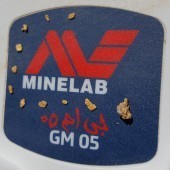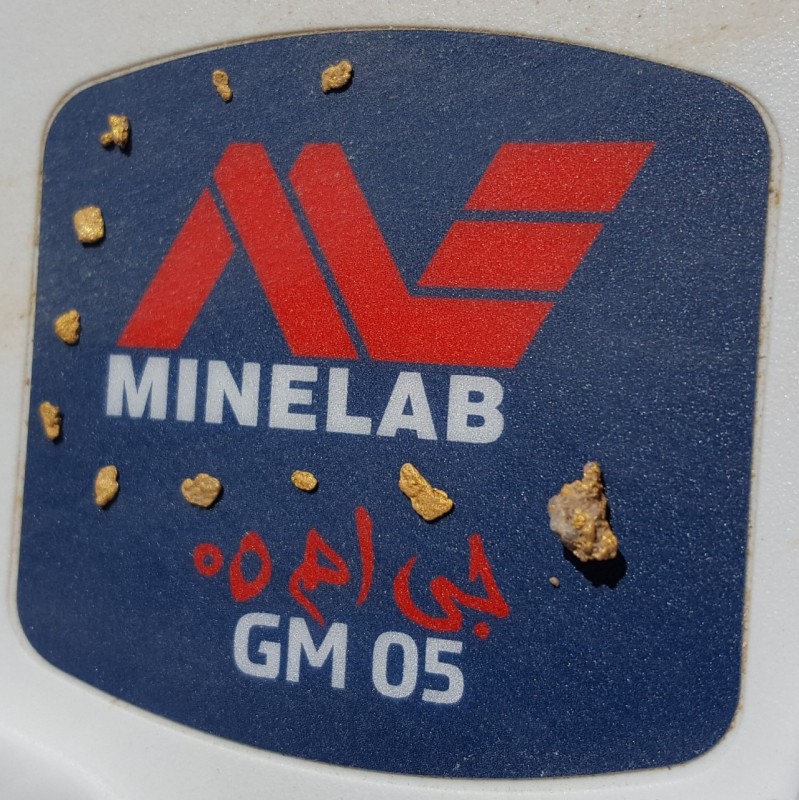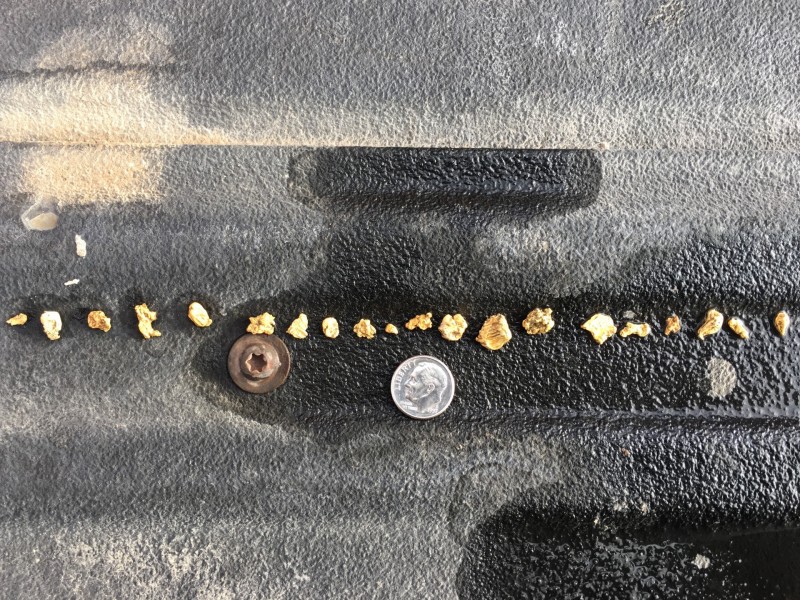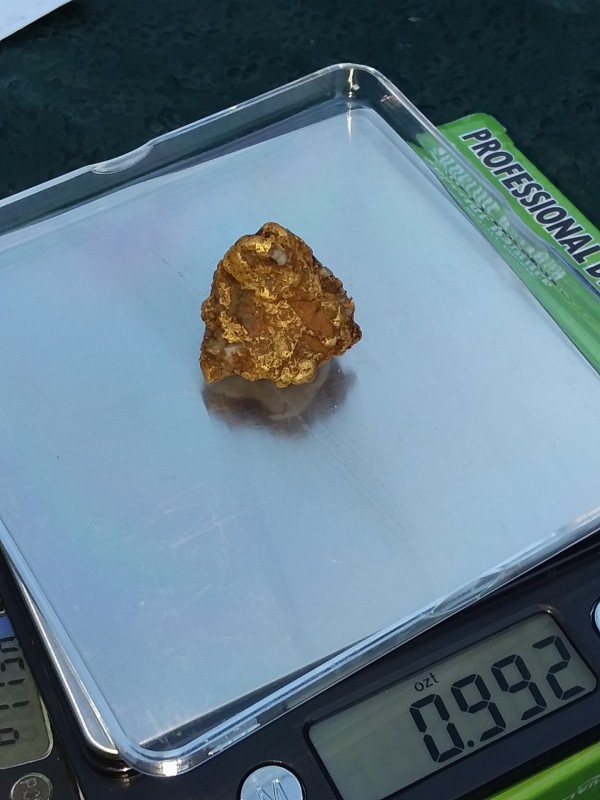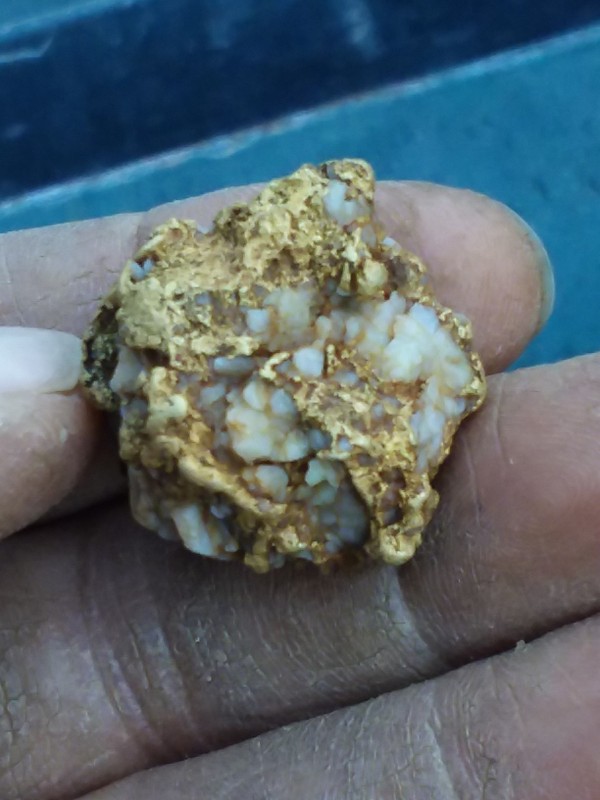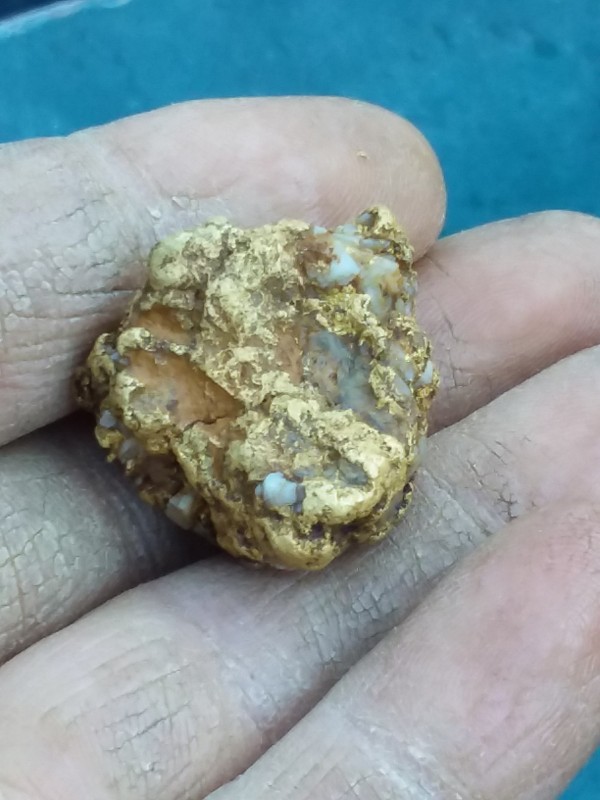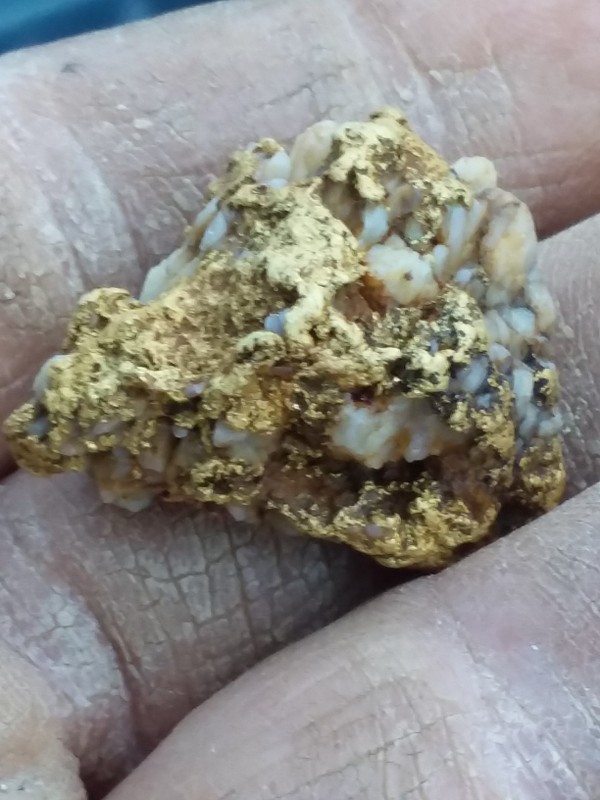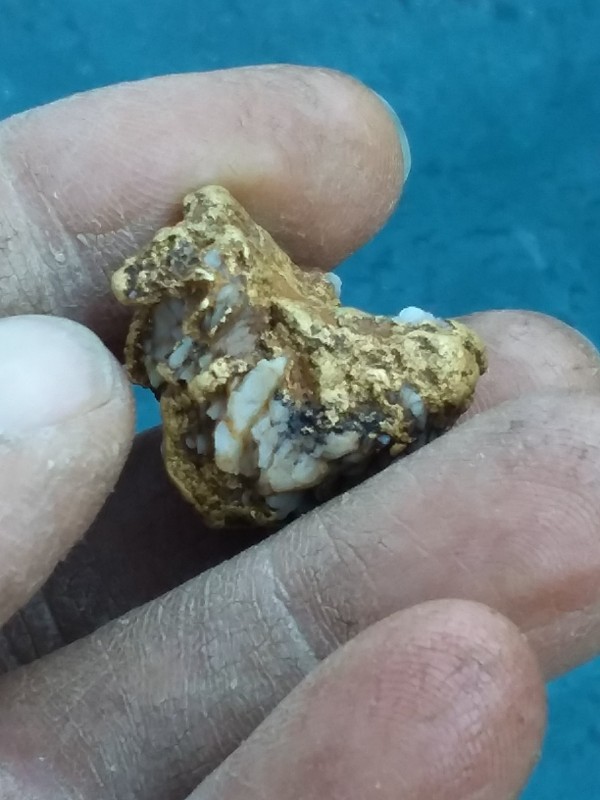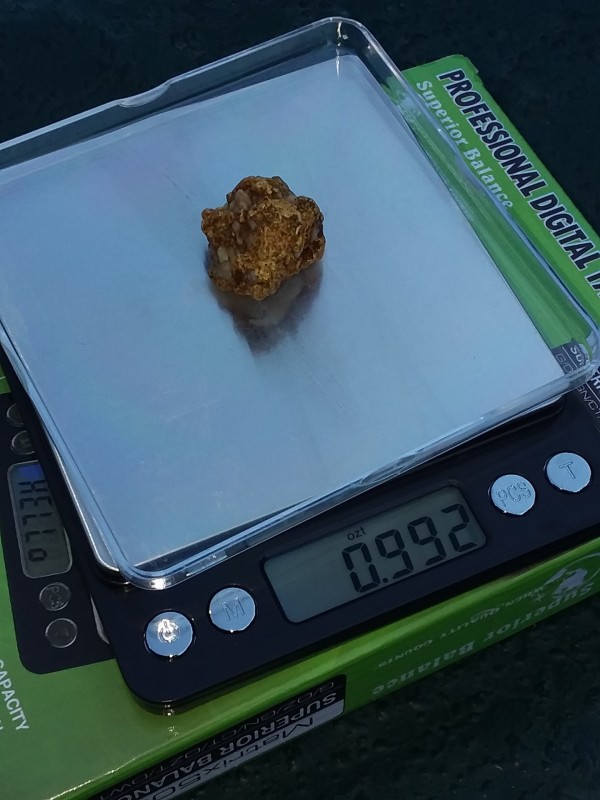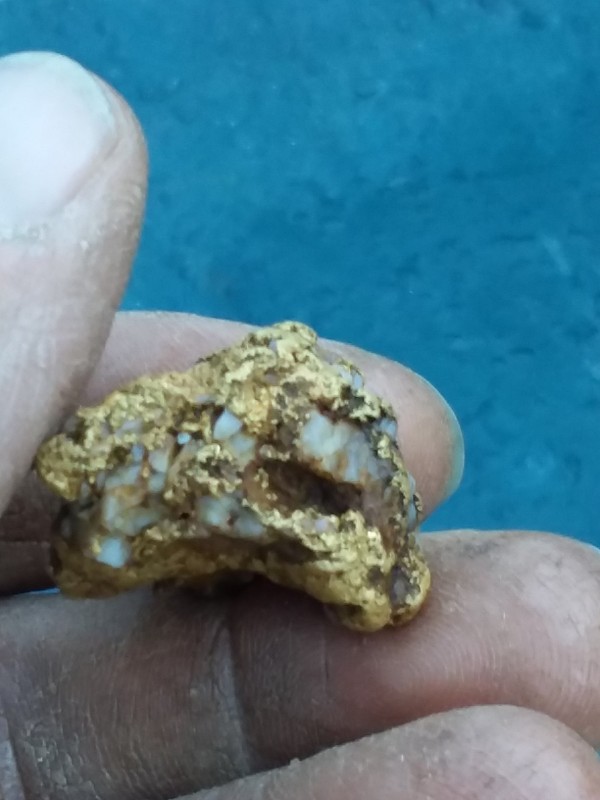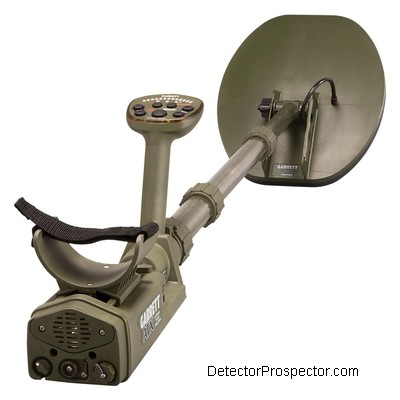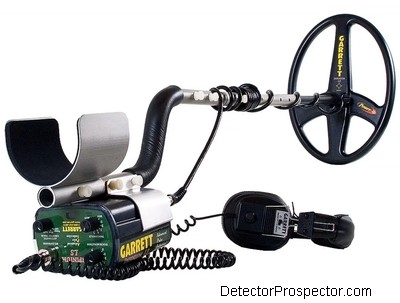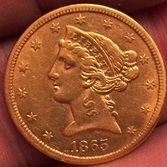Leaderboard
Popular Content
Showing content with the highest reputation on 10/23/2018 in all areas
-
Hit a really hard worked out area in the Mojave this last weekend. With a little know how from watching Bill Southern's videos on the Gold Monster, reading Steve Herschbach's literature on the Monster and a lot of persistence I managed to beep up some good gold! Bedrock and tailing piles were the cats meow in this situation. I also wanted to mention that I picked up an old pair of Koss TD/80's with the 1/8" inch plug and adjustable volume that work flawlessly. -Mike10 points
-
For those that don’t follow me on Facebook this is the end result of 3-days behind my GPZ at Rye Patch. Robin and I, just got home from a big group hunt at Rye Patch and a few days later one of my partners said, he was heading back up. I already had three other buddies there that didn’t make it to the outing and his call got me off the fence to pack my truck up with my gear. Surprised my new Super Ice Chest still had some ice in it too! If you followed my last posting we all had a great trip, but the wind was doing what wind does...keeps nuggets out of your poke. It creates all kinds of noise to fight to hear a faint signal or tones while metal detecting. I knew we left nuggets behind on this hot little patch. Not a puff of wind and the area produced like I was hoping. We took advantage of the warm calm Autumn Desert on a handful of other old huants and if you listened close, you could hear the whispers and cheers of times past while adding to the poke of memories of the present! Leave no nugget behind...I always leave them behind, it’s what keeps me motivated to come back! 5 of us added nuggets and good times to our pokes. Below is my harvest (keeping it in season) of the Great Pumkin Patches of Rye Patch! LuckyLundy6 points
-
If ground coverage is not important to you that might be the case. I could care less if it goes deeper... that is just a bonus. This coil is a necessity for anyone with a huge field or beach to cover. Just a superb coil, I could not be more pleased with mine. I made a world class find with it but that story will have to wait a bit since I am in the middle of the hunt.2 points
-
I went to a new spot with a buddy of mine and decided to try a couple new locations I have been to once before. Wow what a great location. Top secret for sure. I missed this nugget by roughly a foot and my buddy Andy hit on it. We were both using Gold Monsters. It was only a couple inches down under an ancient cobble.2 points
-
The Garrett ATX was introduced by Garrett Electronics in 2013 and is still in production. It is a pulse induction metal detector waterproof to ten feet. It is unique in that it is one of the few metal detectors retailed to the general public in a housing developed for military applications. Garrett makes a military land mine detector called the Recon Pro AML-1000. It was developed and marketed after the Garrett Infinium, the only underwater ground balancing pulse induction (GBPI) metal detector made by a major manufacturer at the time. The Recon is notable for the waterproof telescoping compact design with hidden coil cables. The new ATX is a highly refined detector combining the best of the Garrett Infinium and Garrett Recon AML-1000 into a single package. The actual housing is almost identical to that used by the AML-1000. The electronics has attributes from both detectors. It is a considerable improvement over the much older Infinium electronically and folds into a remarkably small package without disassembly. I was one of the first individuals to obtain a Garrett ATX when they came out as I had been waiting for a new waterproof ground balancing pulse induction metal detector ever since the Infinium came out over ten years ago. I honestly was a bit surprised Garrett came out with a second generation waterproof GBPI before the competition has released any at all. Ground balancing PI detectors have the ability to work in a combination of salt water and black sand/hot rock environments in unique ways. VLF and even standard non-ground balancing PI detectors suffer under these extreme conditions. The Infinium showed me what might be possible in Hawaii but it suffered from issues common in first generation detectors. There was room for improvement, and I am hoping the ATX addresses the electromagnetic interference (EMI) and salt water instability problems that plagued the Infinium. My first impressions were positive, with my first detailed report at Gold and Silver with the New Garrett ATX. I have a separate article on prospecting with the ATX at Gold Nugget Detecting with the Garrett ATX. The ATX is a versatile detector and will see use prospecting, relic hunting, jewelry detecting (above water and under) and even coin detecting. I have two beach detecting articles on the ATX - Beach Detecting in Hawaii With The ATX and Garrett ATX Return To Hawaii. Garrett ATX waterproof pulse induction (PI) metal detector with 10" x 12" coil The Garrett ATX is uniquely versatile in its physical aspects. It can be extended longer than most people need yet can collapse into a very short diver configuration due to the three piece lower rod design. Garrett ATX collapsed for diving use For storage or backpacking the ATX folds even shorter yet to only 20" in length due to the rotating/folding coil design. The ATX coils are rather unique in that they are integrated with the lower rod with the wires running through the rod and a rear mounted hinge on the coil. This allows the coil to fold back completely over the rod and/or detector body. The rod/coil assembly can be rotated 90 degrees for hunting walls and to enable a more compact stowed configuration. Garrett ATX folded for storage or backpacking All the ATX functions are accessed through a top mounted control panel with rubber topped touchpad buttons and LED indicators. A shift button allows each button to have at least two functions allowing for a full feature set in a simplified layout. Garrett ATX Control Panel Quick Guide to Garrett ATX controls from Owner's Guide - Click image for larger version The Garrett ATX comes standard with a 10" x 12" DD search coil. Optional 8" round and 15" x 20" mono coils with integrated lower rods are also available. New for 2017 are 11" x 13" enclosed coil options in both mono and DD designs. The ATX does have a built in waterproof speaker and so does not require headphones. It does come with land headphones that use a waterproof connector, the same connector that Garrett uses on the Infinium and AT Pro/AT Gold models. The same waterproof headphones available for those models work on the ATX and are required if it is desired to put the headphones underwater. The included headphones have a waterproof cable that can be submerged but the headphones themselves must be kept dry. A short adapter dongle is also available to convert the ATX waterproof headphone connector to the standard 1/4" female receptacle so standard metal detector headphones may be used. See the Garrett ATX Accessory Page for details on headphones, search coils, and other accessory items available for the Garrett ATX. There is information there on using Garrett Infinium coils on the ATX, and notes on how to chest mount or even backpack mount the ATX control box. Finally, the ATX runs off eight standard AA batteries, eliminating any shipping or airline issues that can be a problem with some PI detectors. The detector comes complete with both alkaline and NiMH rechargeable batteries plus a 110V and 12V charger system. The detector runs approximately 10-12 hours on a charge when using headphones, less if running off the speaker. The best method is to use the rechargeable batteries and carry the alkaline set as backup. Garrett ATX search coil options I have had the Garrett ATX now since the fall of 2013 and so have had a solid year with the detector. It really does take about a year for me to settle down my thoughts about a detector. I tend to be all giddy with the new toy at first, having fun, and discovering new things. The strong points and weak points are revealed with use over time, and now I think I can offer up a fair summary of the detector. The ATX is a bit difficult in that Garrett started with the premise of using an existing housing designed to military specifications, and then decided to put a detector in it for consumer retail sales. On one hand this is really great as we get this very unique detector design that would never have been developed just for consumer sales. On the other hand it means for some uses the ATX is just not a very good fit. For other uses it works pretty well. It just so happens I am an avid prospector and an avid beach hunter. I do not beach hunt as much as I like but when I do it I really go after it. Because of this the ATX hits a particular sweet spot for me personally. I really do need a good pulse induction metal detector that can be submerged in saltwater. I would keep the ATX for that purpose alone. I am very happy with its performance as a beach detector especially on beaches where there is black sand mineralization or volcanic rock to deal with. The fact it also does very well as a prospecting PI is almost a bonus for me. From a straight up prospecting perspective Garrett also scores though nobody needs a seven pound detector waterproof to 10 feet while desert prospecting. However, if all I had was a couple thousand dollars to invest in a brand new, full warranty PI for gold prospecting it would be a Garrett ATX. I believe the ATX is superior to the White's alternatives in overall performance and it is far less money than a new Minelab PI detector. I will not speak for the Australians but in the U.S. the ATX holds its own for PI performance and I feel quite comfortable using it gold prospecting. I could wish for a lighter package but the fact is it works and a person who puts in the effort should do just fine with the ATX. I know I can. The ATX does well for relic hunting applications and I have even found I can cherry pick coins halfway well with it. I have always been partial to pulse induction detectors and Garrett has won me over with the ATX. I enjoy using the detector and I can make good finds with it, and that is all I can ask of any detector. Some of Steve's finds with the Garrett ATX in the first year of use In retrospect I have actually done remarkably well with the ATX since I got it, considering it is only one of several detectors I have been using and not the one with the most hours on it. I have found about 3 ounces of gold and platinum jewelry with the Garrett ATX plus about two ounces of gold nuggets with it. I have found gold nuggets in Alaska, Arizona, California, and Nevada with the ATX under sunny skies and in pouring rain. My ATX has spent a couple weeks of days underwater in rough surf and is none the worse for wear. Many thanks and a hat's off to Garrett for producing my all time favorite Garrett detector. ~ Steve Herschbach Copyright © 2015 Herschbach Enterprises Official Garrett ATX Page Garrett ATX Instruction Manual Garrett ATX Color Brochure How To Disassemble and Clean the ATX Coil Shaft & Camlocks Garrett ATX Accessory Page Report on new 11" x 13" Search Coils Forum Threads Tagged "garrett atx" Garrett Metal Detectors Forum Garrett ATX vs Minelab GPX 5000 Garrett ATX Technical Specifications* Internet Price $2120.00 Technology Ground Balancing Pulse Induction (GBPI) Frequency 730 pps Autotune Mode(s) Slow Motion and Non-Motion Ground Rejection Four Tracking Speeds and Fixed Soil Adjust Can ground balance into salt soils Discrimination Dual Tones, Iron Check & Reverse Disc Volume Control Volume Limiter plus headphone controls Threshold Control 25 level push button setting Tone Adjust No Audio Boost No Frequency Offset Automatic Pinpoint Mode Yes Audio Output Proprietary headphone socket, Headphones supplied plus Waterproof Speaker Hip Mount No Standard Coil(s) 12" x 10" Open Spoke DD (Or Optional 11" x 13" Coils) Optional Search Coils 8" Round Mono, 20" x 15" Mono, 11" x 13" Enclosed DD, 11" x 13" Enclosed Mono Battery 8 AA rechargeable and disposables supplied Operating Time 10 - 12 hours Weight 6.9 pounds Additional Technology 13 level adjustable gain control Notes Waterproof to 10 feet (requires optional submersible headphones) *Notes on Technical Specifications - Detailed notes about the specifications listed in this chart.1 point
-
The Garrett Infinium LS (Land & Sea) was introduced in 2002 and was discontinued in 2015, replaced by the Garrett ATX. I have a particular interest in the Infinium. I am a metal detecting fanatic and one thing I want to see is better technology. I believe the best way to get that is through good old competition. Although Minelab makes fantastic ground balancing pulse induction metal detectors (the SG/GP series) I was frustrated by the fact that the U.S. manufacturers were bringing nothing to the table to compete. It seemed to me they had totally ceded that portion of the market to Minelab. I was therefore very happy when I was contacted by Garrett Electronics Engineer Brent Weaver about testing a new metal detector prototype in Alaska. The prototype was the soon to be Garrett Infinium LS. Brent wanted to know where we could go where there was really bad ground mineralization so that he could test the unit. We took the unit to the Petersville district north of Anchorage, where there is both highly mineralized bedrock and some very nasty graphitic slate hot rocks. The Infinium handled both with ease. I was impressed and was an early adopter of the unit. It unfortunately was over-hyped prior to release and faced some backlash from those expecting a "Minelab killer". Eventually the hubbub subsided and the Infinium has now found a niche as a very versatile ground balancing pulse induction detector with good performance at a very reasonable price. What makes the machine remarkable is that it is waterproof to 200 feet if you get the optional submersible headphones. Rare also in underwater units is that the Infinium has interchangeable search coils by way of a watertight connector. Most underwater units are hardwired with a single coil, limiting their versatility. Obviously the Infinium can be employed in environments far more adverse than most nugget detectors. Garrett Infinium LS waterproof pulse induction metal detector I had a lot of success using the Garrett Infinium gold nugget and jewelry detecting and have several stories about the unit at Steve's Mining Journal. See Garrett Infinium in Hawaii, Garrett Infinium at Moore Creek, and Coin Detecting with the Garrett Infinium. I also published a lot of tips on operating the unit that are detailed below the specification chart. The Garrett Infinium was discontinued in 2015, replaced by the newer Garrett ATX. Garrett Infinium LS Instruction Manual Forum Threads Tagged "garrett infinium" Garrett Metal Detector Forum Garrett Infinium LS Technical Specifications* Internet Price $1062.00 (now discontinued) Technology Ground Balancing Pulse Induction (GBPI) Transmit Frequency 730 Pulses Per Second Autotune Mode(s) Slow Motion Ground Rejection Tracking (Slow or Fast) and Fixed Soil Adjust No Discrimination Dual tones plus Adjustable Pulse Delay Volume Control Supplied headphones have volume controls Threshold Control One turn control Tone Adjust No Audio Boost No Frequency Offset One turn control Pinpoint Mode No Audio Output Proprietary headphone socket (No speaker) Headphones supplied Hip Mount Yes, holster provided Standard Coil(s) 14" x 10" DD Optional Search Coils Three accessory coils available Battery 8 AA rechargeable and disposables supplied Operating Time 10 - 15 hours Weight 5.6 pounds Additional Technology Waterproof to 200 feet (requires optional submersible headphones). Notes Discontinued in 2015 *Notes on Technical Specifications - Detailed notes about the specifications listed in this chart. The Garrett Infinium is a very simple detector to operate, but here are a few tips to help give you a head start. These are unofficial tips based on my own personal use of the Infinium for detecting gold nuggets, jewelry, coins, and relics. First, here is a suggested starting procedure. Make sure the headphones are just slightly above the minimum setting. The Infinium puts out a very strong audio. Set the Discriminate control at “0”. Set the Threshold about “4”. Turn the Power on and set to the Slow ground tracking position. The machine should beep 4 times indicating fully charged batteries, three times if less charge, two times if low, once, you’d better replace right now. A continuous tone indicates the batteries are below operating condition. No sound? Check your stereo/mono switch and volume controls on your headphones. Wave the coil over a target and adjust the headphones for a comfortable sound on the loudest targets. Then tweak the threshold for a barely discernable tone. Pulse Induction (PI) detectors have extremely sensitive receiver circuits. This means that they are much more prone to picking up outside electrical interference than standard metal detectors. This interference can be from power lines, substations, radio transmitter, lightning, and other metal detectors, to name a few. In populated areas some kind of faint sounds and intermittent signals are inevitable. Some areas can be virtually unsearchable due to interference. Garrett Infinium Controls There are several solutions to the problem. First and most important is the Frequency Adjust control. Rotate the Threshold control as far to the right as it will go. Then turn the Discriminate control to far left. Now listen to the detector. The Discriminate control is now actually a Frequency Adjust control. It has 32 separate positions. Unfortunately, the 32 positions are not marked! So turn the knob a tiny amount to the right and wait a couple seconds. The machine interference may be reduced, may increase, or may stay the same. Then advance again a tiny amount, and listen a couple seconds. The idea is to slowly advance through the different settings looking for the quietest. Once you find the quietest setting, turn the Threshold control back to about “4”. This will lock in the Frequency setting, and it will remain set until you adjust it to something else. Be sure and rotate the Discrimination control back to “0” and you are set to detect. One thing that helps a lot is to keep the coil flat on the ground. In town the coil is like an antenna, and lifting it at an angle off the ground can massively increase the interference. So making the above adjustment with the coil flat on the ground will usually be the way to go. In populated areas, you will still be likely to receive faint noises and spurious false signals. Like most false signals, the key is repeatability. Real signals repeat over a certain spot, false signals come out of nowhere and then are gone. I tend to run my VLF detectors on the ragged edge of performance, with the gain set high. In doing so I get lots of false blips and tiny signals. So I've long since learned to ignore this kind of noise. But for beginners it can be difficult to deal with. Remember - repeatable signals are the real ones. DD coils are less prone to interference than mono coils, and smaller coils are less prone than larger coils. So a change of coils may help. Finally, as most of these false signals are fainter than most genuine targets, reducing the threshold slightly lower than normal can eliminate most of them while still getting all but the faintest real signals. I have been able to operate in town near power lines with quite a bit of background noise. I set my headphones very quiet and listen more to the tone of the signals than the volume. Genuine signals simply sound different than the noise produced by the electrical interference. But if the noise gets bad enough, it can be a real obstacle to pleasant detecting and some areas will simply be off-limits to the Infinium. But please do not take this explanation to mean this is a major issue. It is something all PI detectors face to varying degrees in areas where there are many electrical sources. In unpopulated areas the Infinium is very quiet with a very smooth threshold, except rare blips that may come from distant lightning. As far as the Power/Tracking settings go, I’ve been able to discern little difference between the settings. I generally just set my Infinium on “Slow” and forget about it. In theory, you may be able to hit slightly smaller or deeper targets by switching to “Fixed” after the machine tracks into the ground for a couple minutes, but I have noted no real improvement myself. The “Fast” setting is supposed to help with the worst ground conditions, but again, I have not seen a situation where I felt it made a difference. So “Slow” it is for me. All found by Steve with Garrett Infinium except small gold ring on pinky finger My view of the Discriminate control does not agree at all with what it is billed as. I’ve played with it a lot, and as far as I am concerned it acts just like a sensitivity or gain control. At “0” you have max sensitivity to small items, and max depth. As you advance the control, you lose overall sensitivity. Low conductive targets are affected the most. So the "Reverse Discrimination" theory is that if you advance the control all the way and still get a signal, it is junk. If it disappears, you are supposed to dig it. Well, it does not work that I can see. All that happens in reality is the weakest signals are eliminated and strong signals remain. Big junk at the edge of detection depth has a weak signal, and so this “Reverse Discrimination” method calls it good since the Discrimination control causes it to disappear. Conversely, a 2 ounce gold nugget an inch down responds no matter what. So it should not be dug? Nope, forget all that. The discrimination control can be thought of as a sensitivity control, just like that on a VLF detector. Reducing the sensitivity by advancing the control above “0” can reduce ground noise, particularly in salt water environments. If you are getting lots of ground signals or hot rocks that will not track out, try advancing the Discriminate control to eliminate them. If you are having a problem with tiny trash items, advancing the Discriminate control can eliminate some of them. But the more you advance the control, the less overall depth you will get on most targets. But just like lowering sensitivity or gain on a VLF detector can result in smoother operation and actually better performance, so advancing the Discriminate control on the Infinium to reduce unwanted signals can result in better overall performance. ads by Amazon... Finally, the best is last. The dual tone discrimination on the Infinium really does work, and work well. The catch is it might not work like you think it should! A hi-lo tone means aluminum, gold, nickels, zinc pennies, and various wire-like items. Like small, thin nails, bobby pins, and actual wire. Some thin, flat, flaky rusted steel reads hi-lo. If nugget detecting or beach detecting, hi-lo tones are the ones to go after to get the gold nuggets and gold jewelry. Silver, copper, and clad coins read lo-hi. As does larger steel junk or relics. Want old silver deeper than any VLF detector will detect? Dig lo-hi tones. You will come up with larger, heavily rusted items of all sorts but you will be amazed by the depth you pull up coins with an Infinium. The worse the ground mineralization, the more advantage the Infinium will have over VLF detectors. Try digging lo-hi tones only, and you will find deep coins others are missing. See Coin Detecting with the Garrett Infinium for details. You can use the discriminate control in conjunction with the dual tones to get a bit more information about the target. I have found in actual practice, however, that I rely strictly on the tones for making my digging decisions. Gold - always dig hi-lo tones. Silver coins - always dig lo-hi tones. In very trashy locations it pays again to keep headphone volume low so as not to be overwhelmed by the signals. I have a favorite freshwater beach I hunt. It is hunted to death, and VLF detectors can barely find any targets. My Infinium made the beach seem like it had never been detected. There are signals everywhere. Sure, I’m digging iron junk, and lots of aluminum. But I’m pulling up old coins passed over by thousands of detectors. The biggest catch is you need a location where digging large deep holes is ok… and backfill them! A good pinpointer like the DetectorPro Uniprobe is a major help also. You will also find that on shallow or very large targets the audio will "stick" or drag on for a longer than normal time. In other words, a deep coin will give a nice little tone similar to what a VLF might. But the same coin an inch below the surface will exhibit this "dragging tone" effect. Bury a quarter at 8" and one at 1" and note the difference. This effect can be used to determine the size and depth of targets. Be careful in trashy areas, as closely spaced targets can be "masked" by the effect. A dragging tone from a shallow junk item can cause an adjacent deep good item to be missed. Moving very slow in trashy sites helps considerably. Gold nuggets found at Ganes Creek, Alaska by Steve with Garrett Infinium Nugget detecting with the Infinium is pretty much a no-brainer. Most mining areas will have no interference issues, except perhaps other detectors. I prefer to hip mount the Infinium for long hours of detecting. I keep it on the rear of my hip so that I do not stress the coil wire when bending over. Make sure and get a coil cover for nugget detecting as rocks and gravel are rough on coils. The stock 14" x 10" DD coil is probably best for most nugget detecting applications, but it is nose-heavy when the control box is hip mounted. If ground conditions allow the 14"x10" mono is lighter and will get slightly better depth in mild ground. I like the 10" x 5" DD for hip mounting applications, as the wand/coil combo is very light and works well is steep terrain or thick brush. If you do get into heavy iron junk, oversize iron reads lo-hi, while nearly all gold nuggets read hi-lo. But when possible dig it all! Tidbits... The 14" x 10" mono coil is much easier to pinpoint with than the DD version and gets a bit more depth dead center. But it is nosier in areas with electrical interference and if used nugget detecting will hit hot rocks more than the DD coil. Still, it is my favorite coil. The 8" round mono coil is very popular with lots of people. Mono coils are more sensitive around the edges than in the center, so tiny surface targets will signal at each edge, giving a double blip. It also makes pinpointing these tiny items hard - try dragging one edge along the ground. The little 7" x 3" DD is the most sensitive to small items and is fantastic for working trashy sites, but like most small coils does not cover ground well and gives up overall depth. I prefer it for wading at I can pinpoint and scoop so well with it, and it is great for nugget detecting deep nooks and crannies. To pinpoint excavated items in a pile of dirt with the elliptical coils, try dragging the coil pointed end down in the dirt. The target will signal directly off the nose of the coil. For those so inclined, I cut my Garrett headphones off a few inches above the waterproof connector. I wired a 1/4" female receptacle onto the end creating a "dongle" into which I can plug any headphones. You can put a 1/4" male jack onto the Garrett phones so as not to waste them. One thing to look out for are large elongated steel items. Like a steel strap a foot long or a long spike. These can signal well off one end or the other. Again, a powerful pinpointer can help with un-centered targets. I hope these notes help. The main thing to remember is that this is a radically different detector than any VLF machine. In some ways it is like the early, cruder VLF detectors. Weird operating methods, poor discrimination… but genuine raw power is the reward. Be patient and dig it all for awhile, and I promise you will make finds with the Infinium that would not be possible with a VLF detector. Parting word - keep the coil low, and swing it slow! PI detectors do not like air space between the coil and ground, and are slower to respond than VLF detectors. ~ Steve Herschbach Copyright © 2004 Herschbach Enterprises1 point
-
There are few places left where you can dredge legally in the United States, especially with larger suction dredges. Alaska however is very dredging friendly. I have been updating the Alaska Mining Claims For Sale page and there are several decent dredging claim packages available now at some good prices. If you are looking for a summer long dredging adventure, this is the place to start so check it out.1 point
-
1 point
-
Now that the 6" is readily available, and the 15" is trickling out, what, if anything, is next? It seems like Minelab is finally listening to their customers, will we see the coveted 5x10" closed DD for relic hunting and gold prospecting ? I don't really care if Minelab makes it or Mars, NEL, or anyone else for that matter as long as it works.1 point
-
Maybe Reales is plural. The singular term is the one I always question. I usually spell it Reale, but I see it everywhere as Real mostly. I think I've seen it written both ways in one article I have to go to Mel Fishers site. What ever he says goes in my book. Update; Now I'm really confused. Mel Fisher's site has some replicas listed as 1 Reale, 2 Reale (no s). Maybe because it's not more than one coin???1 point
-
I'd also like to see that Goldmaster 24k vs Goldmonster 1000 match. These are the two machines I am presently seriously considering. Aside from the ability to detect very small gold, both apparently have good tracking capabilities for coping with mineralized ground (California, so lots of that here).1 point
-
1 point
-
1 point
-
Yah i found a tiny 1.4 gn piece at another undisclosed location and Andy found a little dink in an old timers pile in the middle of a thick grove of saplings at top of a mountain. All three pieces were found in different locations about 4.5 miles away from each other.1 point
-
When are we gona see some videos on the 15" coil? In particular side by side comparisons with stock coil. I'm thinking the big coil is WAY to much money for a VERY small gain, if any at all. Matt1 point
-
1 point
-
https://www.robsdetectors.com/jim-straights-8th-edition-follow-the-drywashwer/ here's a link to Robs store with a bunch of pics. He told me its no longer in print and doesn't expect to get anymore1 point
-
Would like to see the new White's 24k up against the Minelab GM1000.........call it a "grudge match"1 point
-
1,5h on the beach today. Weather was good in the afternoon, so I found some clad: And finally after all those hours !!! : 585 / 14k wedding band - yeeeesss! Oh boy, still can't belive it. I never thought I would find one on the dry sand. It weights about 11g.1 point

